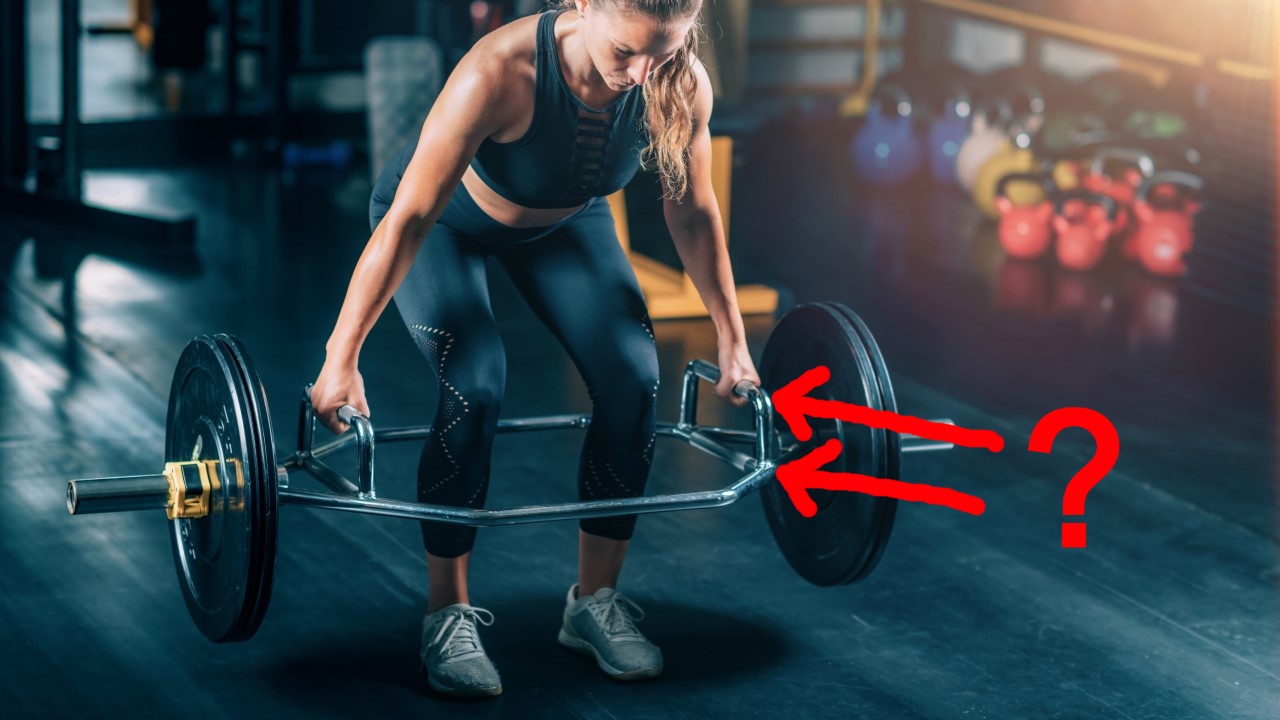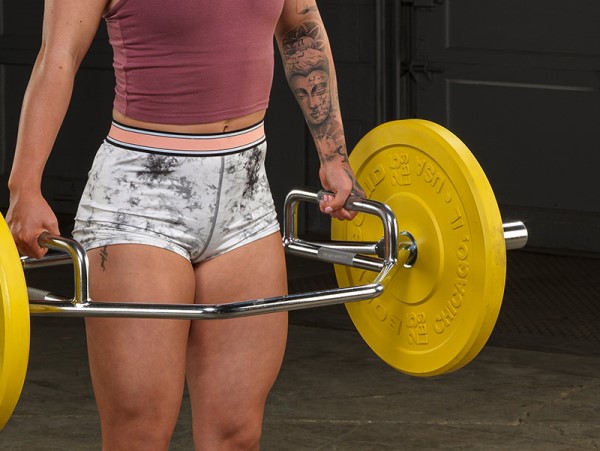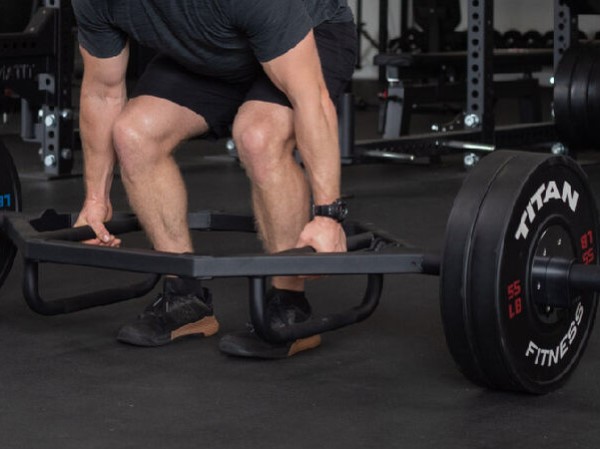A major feature to look out for in these hex shaped bars, also known as trap bars, is the “high” or “low” handles.
“Low” handles are handles flush with the height of the rest of the bar. So if the bar is sitting 8″ off the ground, that’s where you’re gripping too. This would be the same height you would grip with straight-bar deadlifts, depending on what size plates you’re using.
“High” handles are raised a few inches. This has two effects. First, it means your starting body position is a little higher, so your range of motion is a little smaller as you don’t squat as deep. The second effect isn’t so obvious until you use it. When the handles are raised it means the bar balances itself as long as you grip it reasonably in the middle, due to a pendulum effect. With flush handles, the bar is tougher to balance and can tip forward or back on you if you don’t grip it perfectly in the center.
Many of the hex bars available come with both high and low handles, so you can simply flip the bar over to use the other ones, as shown in the pics above.
For an exercise like shrugs, high handles are preferred for stability, because range of motion off the floor is not an issue. The shrug exercise doesn’t start until you’re standing with your hands at your sides.
For other specialty bars, see Gopher Performance’s article on the top 5 types of bars, which includes hex deadlift bars.
Pendulum stability is also a feature of multi-grip cambered bars, which I wrote a guide on.



